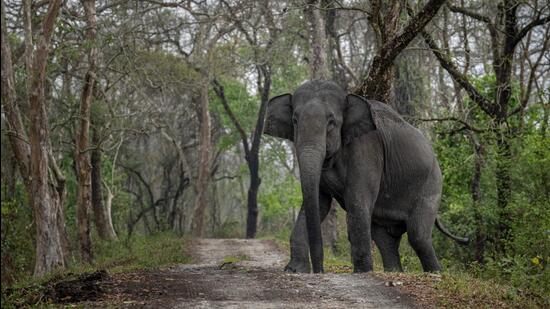Villagers turn to bees to check elephants from raiding crops in West Bengal
Wild honey from the tiger-infested mangrove forests of the Sunderbans in West Bengal is known for its purity and therapeutic uses
Wild honey from the tiger-infested mangrove forests of the Sunderbans in West Bengal is known for its purity and therapeutic uses. But for the first time, honey would now be produced through apiaries in villages located in and around the Buxa Tiger Reserve and Jaldapara National Park in north Bengal.

Located in the foothills of the Himalayas, Jaldapara is known for its elephants and rhinoceroses, and a tiger was recently spotted at Buxa after almost two decades. Man-animal conflict is high in the region because of its ever-growing elephant population and fragmented forests.
“This is for the first time that honey would be produced through apiculture by villagers living inside and on the fringes of Jaldapara and BTR,” said Surendra Kumar Meena, district magistrate of Alipurduar. “Around 10,000 kilos of honey would be produced in the first year and then we intend to scale it up.”
The project is intended to bring down man-elephant conflict in the area, officials said. West Bengal accounts for the second-highest incidents of man-elephant conflict in the country after Odisha. Between 2015-16 and 2019-20, at least 430 people have been killed by elephants in West Bengal. Most of the deaths took place in north Bengal.
With conservation efforts, the elephant population in the state has shot up from around 175 in 1989 to around 700 at present. In north Bengal, the elephant population is more than 600.
“While on one hand, it would help generate alternative livelihood for the villagers and stop them from going inside the forest, thus cutting down chances of encounters with wild animals,” said Parveen Kaswan, deputy field director of Buxa Tiger Reserve. “The beehives in the villages may also prevent elephants from coming into the villages.”
Reducing human interference in the tiger reserve may also go a long way in bringing back the big cats. Although the prey base of tigers like chital and sambar has been dwindling because of fading grasslands, human activity inside the forest has also been cited as one of the reasons behind the disappearance of tigers in the reserve.
“Since a tiger was spotted in the BTR in December 2021, efforts are being taken to increase the grasslands. But we also need to minimize the human interference in the forest,” a forester said, seeking anonymity. “Providing an alternative livelihood in the form of apiculture may help us to achieve this objective.”
The project is being funded by the district administration and the forest department is providing all the support. The district administration is also coming up with an apiculture training centre where villagers could be taught to scale up production in the next few years.
“To start with, we are providing around 600 boxes each in Jaldapara area and BTR area. The district administration has already provided a fund of more than ₹2 crores. A few thousand people would be benefitted,” said Meena. “We would be also launching a brand to market the honey in a day or two. Initially, it would be sold through stalls in the district and later would be available online as well.”
Apiculture would certainly help local villagers with an alternative employment avenue, thus preventing them from going inside the forest, experts said, but they were of a different opinion on warding off elephants with honey bees.
“Beehive fencing may work at a very local scale, maybe to save a few individual houses, but it won’t work on a large scale, as past experiences in Africa and Sri Lanka have shown,” said Raman Sukumar, elephant expert and ecologist at the Indian Institute of Science in Bengaluru. “Elephants tend to come back through alternative routes to raid croplands. But the effort will certainly help villagers with an alternative livelihood and is a welcome measure.”






